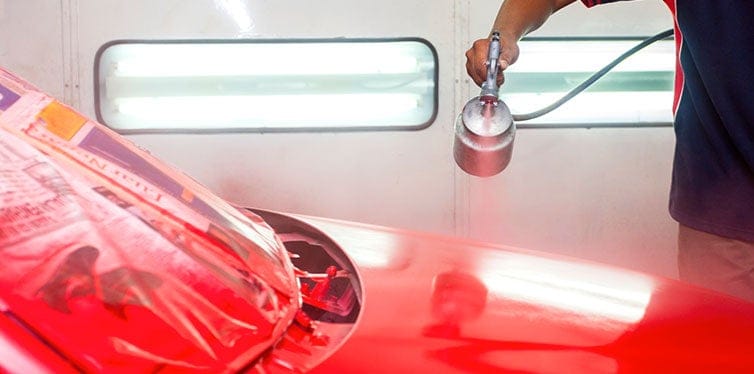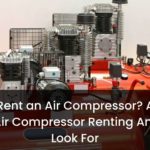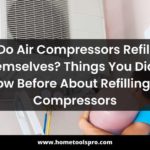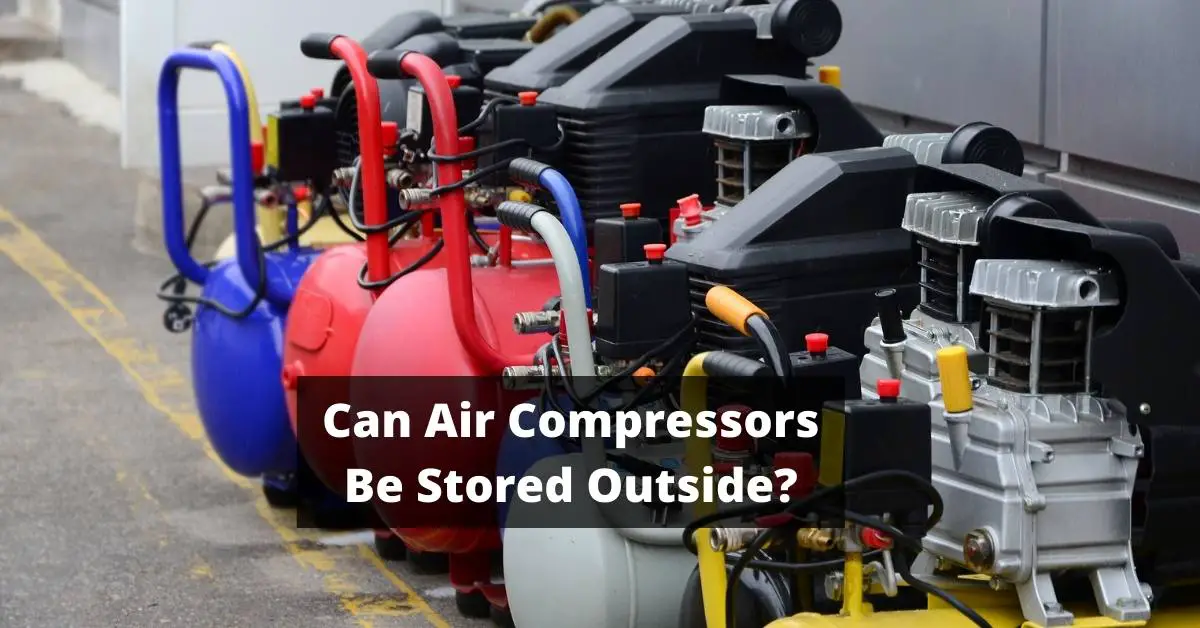With so many brands and models of air compressors on the market, it can be difficult when choosing a specific one.
Although all air compressors serve a similarity in their function, there are differences to look for depending on how they will be utilized.
If you’re thinking about painting your vehicle, there is one very important tool you will need, and that’s an air compressor.
Using an air compressor to paint a vehicle is far different from using it to paint a fence or a piece of furniture; as with these tasks, you can take a break and come back with not much of an effect.
You want to ensure that you will have enough air to finish each step when painting vehicles, otherwise, your paint job may take on a mottled appearance.
Before choosing an air compressor for this task, there are a few factors to take into consideration.
Size of tank
If you are wondering whether you can use a portable air compressor to paint your vehicle, the answer is yes.
Tank sizes are much smaller in the portable units and it would be best to paint in sections so there is no evidence of a start and endpoint.
With a smaller tank, you would have to wait until the compressor catches up to continue, and would take much longer to finish compared to larger tanks, but is doable if you choose.
It is recommended that your air compressor has a tank size of at least 60 gallons or larger to get a proper and professional-looking application.
Air Pressure
Air pressure and volume needed for spray painting is much lower than most would think. Depending on which spray gun you use, will determine how much pressure it needs.
With a high-volume, low-pressure sprayer (high spray output, using brief pressure), it is recommended to use between 26-29 PSIs.
Depending on which coat you are applying may increase or decrease the amount of pressure needed to ensure a proper spray. These types of sprayers consume more energy, though, as they need more compressed air to operate.
Any type of air compressor can be used with a low volume, low-pressure sprayer as they need far fewer PSIs to operate.
CFM (cubic feet per minute)
The amount of air produced by the compressor per minute is the definition of CFM (cubic feet per minute).
When choosing your air compressor, the CFM needs to be less for the sprayer than that of the air compressor, or the spray gun may not work as efficiently.
If the spray gun has more CFM than the air compressor, you won’t be able to regulate the proper amount of air needed.
You will definitely want to purchase an air compressor with a higher CFM if you plan on painting for extended periods.
Also, keep in mind that an air compressor will produce a higher CFM with a larger HP (Horsepower)
Our Top Picks Proper Size Air Compressor for Painting Vehicles
Ingersoll Rand Two-Stage 60 Gallon Air Compressor
This air compressor would be ideal for spray painting vehicles. It’s a two-stage with a 60-gallon tank, a maximum psi of 175, and has a lifespan of 2000 hours before service.
The tank is vertical, which is ideal for shops where space is an issue.
Dewalt 15 Gallon Air Compressor
If you are still considering a portable air compressor for painting, the Dewalt 15 gallon would be an ideal choice. It has a 1.6 HP motor and delivers 5.0 CFM at 90 PSIs.
Its maximum tank storage pressure is 200psi, all allowing for quick recovery of the compressor and a longer run time of the paint sprayer.
Be sure to check the manual on the sprayer before purchasing to ensure this compressor is a suitable match.
Porter-Cable 20 Gallon Oil-Free
This is a 20-gallon portable, oil-free model from porter cable, with a maximum airflow rate of 150 psi and 4.0 CFM at 90 psi.
Its handle and 7-inch wheels make it easy to transport. The oil-free motor attributes to low maintenance and offers the capability of an extended run time with tools requiring a longer span of air.
Tips For Using Air Compressors To Paint Vehicles
- Select proper paint
- Ensure you are painting in a well-ventilated area
- Prepare the area for painting-protect the area around the vehicle with plastic sheets
- Mask and safety glasses-it’s very important to wear proper protective equipment to protect yourself from fumes.
- Prepare the surface of the vehicle for painting-make sure your vehicle is clean and free of dust and debris, you may have to sand rusted areas
- Turn on the air compressor to build pressure and test your sprayer
- Adjust the regulator accordingly to your sprayer
- Prime the sprayer-point the sprayer into a paint disposal container and squeeze the trigger until the paint flows
- Pour the paint into the sprayer container
- When spraying, overlap each painted area lightly
Oil Lubricated or Oil-Free
When choosing an air compressor specifically for painting vehicles, you will need to decide whether oil-lubricated or oil-free will be best.
The Automotive industry recommends oil-free air compressors as being the best choice for spray painting.
Any oil that finds its way into the compressed air can negatively affect the finish and even prevent the paint and sealers from bonding to the vehicle.
An oil-lubricated compressor will push out small amounts of oil, but when painting, there must be a water trap/filter in the line, which will absorb any output of oil.
Stationary or Portable
Portable air compressors are ideal for small job site applications, as they can be transported to multiple sites, however, they tend to be equipped with small tanks, and chances are, you will most likely run out of air trying to paint your vehicle all at once.
It is recommended that air compressors with a tank size of at least 60 gallons be used in vehicle spray paint applications to ensure a smooth, professional-looking job.
One or Two Stage
A two-stage air compressor is the best choice for spray painting, providing the cost is not an issue.
With a single-stage, it only pumps once and takes longer to fill the tank compared to a two-stage air compressor.
A two-stage air compressor is more beneficial for painting applications as a single-stage is used sporadically, whereas a two-stage is utilized for long, continuous applications.
Conclusion
After taking these recommendations into consideration, we’ve included a couple of different options of air compressors we feel would be ideal for your vehicle painting task.
Keeping in mind which air compressor you choose is solely based upon your needs, experience level, and affordability.
We always recommend a larger tank for this type of application, but if you are comfortable painting in sections, or are a painting professional, then a smaller tank may be sufficient as well.






